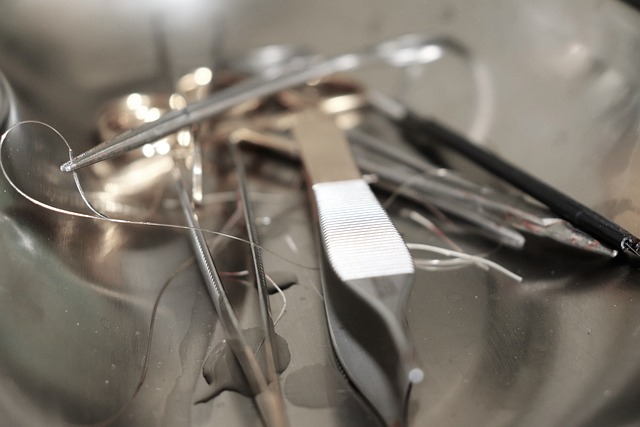
Introduction to Modern Surgical Innovations
The 21st century has witnessed incredible advancements in surgical techniques, revolutionizing the way medical professionals approach treatment and patient care. From new surgical procedures introduced in 2023 to the integration of cutting-edge technology, the landscape of surgery is constantly evolving. This blog delves into these exciting developments, highlighting the role of technology in surgery, the history of surgical innovations, and the promising future of robotic surgery.
The Evolution of Surgical Techniques: A Historical Perspective
A Journey Through the History of Technology in Surgery
Surgical techniques have come a long way since ancient times. Early surgeries were often rudimentary, relying on basic tools and a limited understanding of human anatomy. However, the advent of anesthesia in the 19th century marked a significant turning point, allowing surgeons to perform more complex procedures without causing unbearable pain to patients.
Key Milestones in Surgical History
- 1846: The first successful public demonstration of anesthesia, enabling painless surgery.
- 1920s: Introduction of antibiotics, drastically reducing post-surgical infections.
- 1950s: Development of open-heart surgery, a breakthrough in treating cardiovascular diseases.
- 1980s: Advent of minimally invasive surgery, reducing recovery times and improving outcomes.
These milestones set the stage for the remarkable advancements we see today, where technology and innovation continue to push the boundaries of what is possible in surgery.
New Surgical Procedures in 2023
Breakthroughs in Minimally Invasive Techniques
Minimally invasive surgery (MIS) has transformed the field of surgery by reducing trauma to the body, shortening hospital stays, and speeding up recovery times. In 2023, several new procedures have emerged, further enhancing the capabilities of MIS:
- Single-Port Surgery: Utilizing a single incision to perform complex surgeries, reducing scarring and recovery time.
- Natural Orifice Surgery: Performing surgery through natural body openings, eliminating the need for external incisions.
Advances in Imaging and Navigation
State-of-the-art imaging technologies, such as 3D imaging and augmented reality, have revolutionized surgical navigation. These innovations provide surgeons with enhanced visualization and precision, improving the accuracy and outcomes of complex procedures.
The Role of Technology in Surgery
Cutting-Edge Innovations Transforming Surgical Practices
Technological advancements have profoundly impacted the field of surgery, introducing new tools and techniques that improve patient outcomes and safety. Some of the most notable innovations include:
- Robotic Surgery: Utilizing robotic systems like the da Vinci Surgical System, surgeons can perform intricate procedures with unparalleled precision and control.
- MARVEL for Brain Surgery: The MARVEL (Minimally Invasive Robotic Visualization & Endoscopy) system offers enhanced visualization for neurosurgeons, making brain surgeries safer and more effective.
The Impact of Artificial Intelligence and Machine Learning
Artificial intelligence (AI) and machine learning (ML) are playing an increasingly important role in surgery. These technologies assist in various aspects of surgical care, from preoperative planning to intraoperative guidance and postoperative recovery. AI-driven analytics help predict surgical outcomes, identify potential complications, and personalize patient care.
Techniques and Technology in Surgery: A Closer Look
Innovations in Surgical Instruments
Modern surgical instruments are designed with precision and efficiency in mind. Advanced materials and ergonomic designs enhance the surgeon’s ability to perform delicate procedures with minimal risk to the patient. For example, laser scalpels and ultrasonic dissectors allow for precise tissue cutting and coagulation, reducing blood loss and promoting faster healing.
Enhanced Recovery After Surgery (ERAS) Protocols
ERAS protocols are comprehensive, evidence-based guidelines that optimize perioperative care. These protocols aim to minimize the physiological stress of surgery, enhance recovery, and improve patient outcomes. Key components of ERAS include:
- Preoperative Optimization: Ensuring patients are in the best possible condition before surgery.
- Multimodal Analgesia: Using a combination of pain relief methods to reduce the need for opioids.
- Early Mobilization: Encouraging patients to move and walk soon after surgery to speed up recovery.
The Future of Robotic Surgery
The Rise of Robotic-Assisted Procedures
Robotic surgery is rapidly gaining traction as a preferred method for many complex procedures. The precision and flexibility offered by robotic systems enable surgeons to perform tasks that would be challenging or impossible with traditional techniques. As technology continues to advance, the capabilities of robotic surgery are expected to expand even further.
Potential Developments in Robotic Surgery
Future advancements in robotic surgery may include:
- Tele-surgery: Allowing surgeons to perform operations remotely, expanding access to specialized care.
- Autonomous Surgical Robots: Machines capable of performing certain tasks independently, under the supervision of a human surgeon.
- Enhanced Haptic Feedback: Providing surgeons with tactile sensations during robotic procedures, improving their ability to manipulate tissues accurately.
Conclusion
The advancements in surgical techniques and technology have revolutionized the field of medicine, offering new hope and improved outcomes for patients. From the historical evolution of surgery to the latest innovations in robotic and minimally invasive procedures, the future of surgery is incredibly promising. As we continue to embrace these advancements, the potential for even greater breakthroughs remains limitless, paving the way for a new era in medical care.
Understanding the significance of these advancements and staying informed about the latest trends and technologies in surgery is crucial for both medical professionals and patients. By doing so, we can ensure that we are prepared to take full advantage of the benefits that modern surgical techniques have to offer.